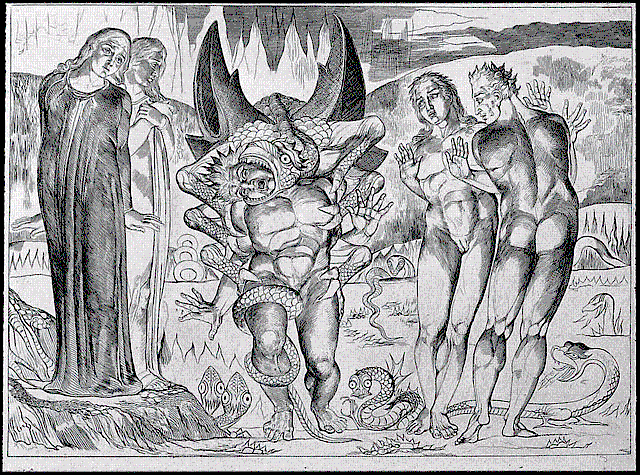 I know that the old ladies forever praying rosaries at the back of the Church don’t really live in the sacristy. I know that the women who eternally surround the Mary-statue didn’t come with a “Buy Our Statue, Get an Aging Filipino!” deal. I know that the “Church-lady” is a person like the rest of us, chock full of her own doubts and insecurities, and yet — the Church-lady is also a type, just like the ‘hero,’ ‘celebrity,’ or the ‘starving artist.’ I want to investigate the creature.
I know that the old ladies forever praying rosaries at the back of the Church don’t really live in the sacristy. I know that the women who eternally surround the Mary-statue didn’t come with a “Buy Our Statue, Get an Aging Filipino!” deal. I know that the “Church-lady” is a person like the rest of us, chock full of her own doubts and insecurities, and yet — the Church-lady is also a type, just like the ‘hero,’ ‘celebrity,’ or the ‘starving artist.’ I want to investigate the creature.
The best way to understand the Church-lady is through the joke that “she lives in the church.” You and I, we enter our houses of the holy in spurts, bursting open the doors in moments of crisis or lighting candles in weeks of enthusiasm. The Church-lady observes these interruptions from the back pew where, wrapping up her 900-day novena to St. Gertrude, she prays for our sorry souls.

Don’t question her as she moves flowers or tidies hymnals, don’t ask her how, exactly, she has a key to the tabernacle, and for the sake of your eternal salvation, don’t think that she has a “job” at the church. She is no more “employed” by the priest than a daughter is employed in her house, no more a “volunteer” than a man is a volunteer in his own vegetable garden. She moves about the parish with the reverence, familiarity and crankiness of a homebody. The priest has no real say in the matter. Is it any wonder that the children imagine she pulls at a cross, opens a secret panel, and reveals her room? Or that the confessional serves as an elevator to her lair?
It’s a joke, but it’s a true joke: The Church-lady lives in the Church. But to “live in the Church” isn’t simply to spend a lot of time within its physical structure. There are janitors, youth ministers and even religious who, putting in equal hours, will never amount to the exemplary status of the Church-lady. To really live in a place to cease considering that place as a theoretical object detached from our experience, a “point on a map,” an “apartment,” “bungalow,” or some other repeatable structure. When we live in a place we saturate it with our experience, making it inseparable from the joys and sorrows of life, until we are unable to reduce the place back into “just a building” or “one house among many.” We make the house our home, wrapped up in and inseparable from our being.
The constant geographical presence of the Church-lady is a physical manifestation of a spiritual presence to the Divine, one that reeks of audacious familiarity, unrepentant companionship, and a confident being-with the Lord — a being-with that has ceased to consider His House as some extrinsic, conceptual place, and has begun to consider it as Home. The Church is inseparable from her being. She cannot reduce it back to a theoretical object, an institution she may or may not devote herself to, or a possible place in a world of possible places.
This becomes obvious when we consider how easily the “Christian of the world” is embarrassed by the Church-lady. A young man tells a Church-lady that he is an atheist. She responds, in all earnestness: “Talk to God about it.” Another says, with all the papal superiority of a Catholic Reporter reader, that the practice of praying to the Saints is a decadent, merit-based, medieval disruption of the early Church’s pure concept of Unity in Christ. She says: “Pray to St. Thomas, he’s the patron saint of skeptics.” Another tells her that he doubts the Real Presence. She responds: “He’s used to it.”

The Church-lady is impossibly bad at entertaining positions outside of the Church, even for the sake of argument. She argues from the Church. God is so far from being a “theory” or a “topic of debate” that he cannot be held in suspense or treated “as if” non-existent. Such a position might work for the concept “God,” a God extrinsic to my being, a God “out there” who I may affirm or deny — it doesn’t work for the God who lives with us, who speaks to us, who cares for us. It’s as if one were to say “I don’t believe in the existence of your husband.” The husband is so real, so suffered, so lived-with, that it would hardly occur to us to respond from this idea of his non-existence. We would hardly begin by arguing, “Well, if my husband didn’t exist, who’s gin am I buying?” We’d assert the obvious daily experience of his existence: “Of course he exists, go talk to the fool yourself!”
This is the critical method of the Church-lady, for whom Church is home and God is companion. She suffers the divine, lives with it, eats it, and, as a result, seems foolish in our secular age, for whom the divine is an option, but never a given — a possibility among other possibilities, never simply lived with beyond doubt.
We look for heroes of apophatic mysticism in the caves of ascetics. We should be looking to the ladies at the 3p.m. Divine Mercy Chaplet. The transcendence of our concepts of God does not result in a speechless encounter with the One, a stripping away of all our profane knowledge until we are left with an awe in the face of “that of whom nothing can be said.” Those are still concepts anyways — the concept of “that of which nothing can be said,” the concept of “the One.” No, we trade in our all-too-human ideas of God, not for an inhuman idea, but for a relationship with God. We know God as we know our friends: by transcending all that can be said about them and entering into a sphere in which we actively relate to them — loving them, speaking to them, consoling them.
The atheist gets told to “talk to God about his atheism” because the Church-lady is unwilling to take his stance and consider God as an object, a possible, and a theory available to affirmation and denial. She lives in and with the reality of God — and asserts it foolishly. She is “always at Church” and she refuses to leave — even for the sake of a suave apologetic. This is the price for really believing — it becomes harder to entertain the skeptical proposition in order to build a proof of the Creator, harder to intellectually suspend our certainty of God’s existence. As we ascend the divine ladder to Church-lady status, we become more likely to proclaim than argue, more likely to shout “He is risen” than consider the question of the Resurrection according to the discipline of the academic historians. We are in love, and it’s easier to doubt my own existence than that of the beloved, making it that much harder to argue from the blank space of modern secularism, in which God’s existence is hung perpetually in doubt.
Of course, the Church needs to give reason for its hope, coherent testimony to the Sacred in a secular age — but a love of reasonable argument that leaves behind the validity and efficacy of the Church-lady is unreasonable. When God is suffered rather than merely believed in, we become foolish, but it’s holy tomfoolery, evangelically cunning beyond all attempts at cunning. The Church-lady proves God as a wife proves her husband, her status of being-with the divine giving testimony to the divine as a person to be lived with beyond every possible “god” we can prove. She makes no arguments, or she makes bad arguments — but only because she already is an argument. May she live forever.















